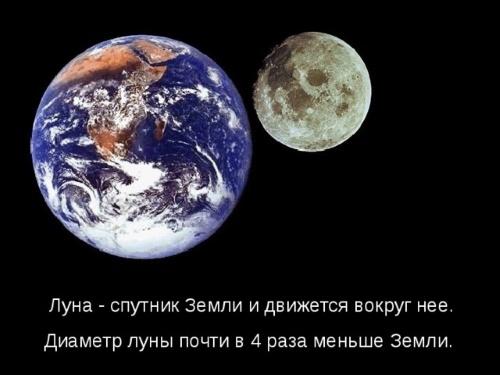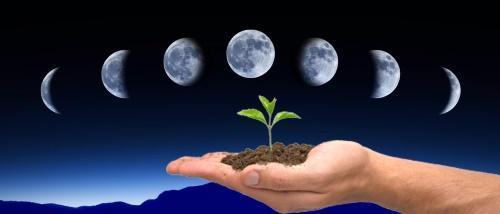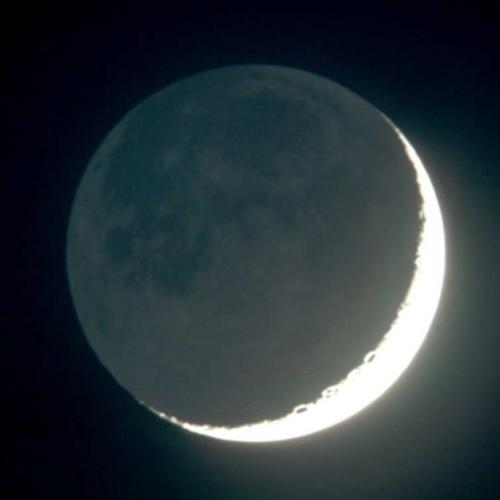How the moon affects the earth in terms of gardening
 The moon is a satellite of our planet, which revolves around it at almost the same speed. The satellite is always turned to Earth with one side. The moon serves as a kind of protective shield that takes the blows of cosmic bodies. As a result of the mutual rotation of the planets on Earth, ebb and flow occur. Also, the duration of daylight hours increases or decreases and the magnetic field changes. All this could not but affect the living organisms that inhabit the planet, including vegetation. Our ancestors have long figured out how the moon affects the earth in terms of planting. Lunar calendars and are still popular today. According to them, they plant and water, fertilize and harvest. What is the lunar power and how is it able to help summer residents?
The moon is a satellite of our planet, which revolves around it at almost the same speed. The satellite is always turned to Earth with one side. The moon serves as a kind of protective shield that takes the blows of cosmic bodies. As a result of the mutual rotation of the planets on Earth, ebb and flow occur. Also, the duration of daylight hours increases or decreases and the magnetic field changes. All this could not but affect the living organisms that inhabit the planet, including vegetation. Our ancestors have long figured out how the moon affects the earth in terms of planting. Lunar calendars and are still popular today. According to them, they plant and water, fertilize and harvest. What is the lunar power and how is it able to help summer residents?
How does the moon affect the earth and vegetation?

The lunar month is the period during which the Moon makes one revolution around its center of gravity and the Earth. It is equal to 29.5 Earth days and begins with a new moon.
The influence of the Moon on the cultivation of crops is expressed by the acceleration or inhibition of their development at certain stages of the lunar month, namely:
- new moon;
- Waxing Crescent;
- full moon;
- waning moon.
Let's consider these phases in more detail.
What can you do on the new moon?
 At the beginning of the lunar month, when a thin lunar crescent is visible in the sky, it is better not to start work in the ground. The planted plants are difficult to accept, and the growing ones become fragile. Their root system is sensitive to the slightest interference, so it is not even recommended to loosen the beds.
At the beginning of the lunar month, when a thin lunar crescent is visible in the sky, it is better not to start work in the ground. The planted plants are difficult to accept, and the growing ones become fragile. Their root system is sensitive to the slightest interference, so it is not even recommended to loosen the beds.
But for weeds, this is the most opportune moment to start fighting.
What happens to the land and plants on the growing moon?
 When the young month begins to gradually grow and round up, the metabolism of plants also accelerates. They grow faster, absorb moisture and fertilizers better. The vital force from the roots is redirected to the above-ground part. During this period, it is recommended:
When the young month begins to gradually grow and round up, the metabolism of plants also accelerates. They grow faster, absorb moisture and fertilizers better. The vital force from the roots is redirected to the above-ground part. During this period, it is recommended:
- plant and sow crops that yield crops from the aboveground part;
- transplant;
- feed.
But pruning on the growing moon is categorically not worth it.
Full moon and gardening
 At the time when the moon completes its growth and becomes round, planting work should also be completed. Pruning and transplanting are also not carried out. Plants are very sensitive to interference with their development.
At the time when the moon completes its growth and becomes round, planting work should also be completed. Pruning and transplanting are also not carried out. Plants are very sensitive to interference with their development.
But the harvest harvested on the full moon is the most useful and tasty.
The influence of the waning moon
 The night luminary began to gradually “grow thin” and thinner, which means that in plants the vital force is shifting under the soil, to the roots. At this time, planted shrubs and trees take root well. It is also recommended to plant crops that bear fruit underground (onions, potatoes). But it is better not to transplant other crops. But you can carry out pruning, grafting and harvesting.
The night luminary began to gradually “grow thin” and thinner, which means that in plants the vital force is shifting under the soil, to the roots. At this time, planted shrubs and trees take root well. It is also recommended to plant crops that bear fruit underground (onions, potatoes). But it is better not to transplant other crops. But you can carry out pruning, grafting and harvesting.